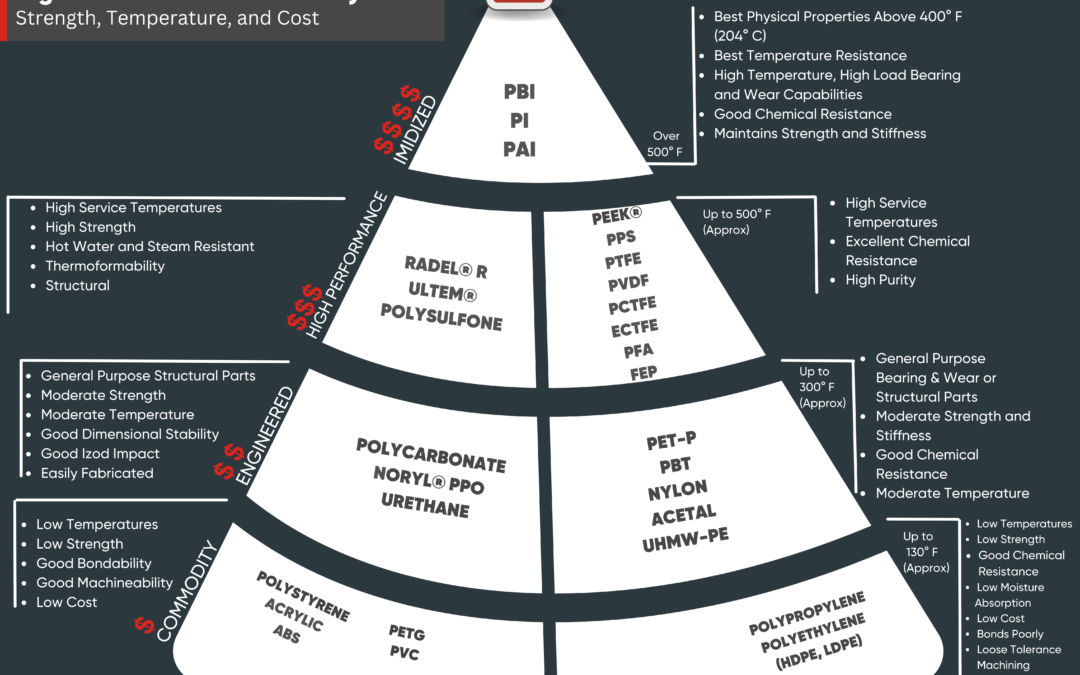High-performance plastics are used in a variety of industries, including Semiconductor, Medical, Space, and Defense. These materials are chosen for their ability to withstand various demands, such as temperature, stress, load, impact, wear, visual clarity, chemical resistance, and desired lifecycle. However, not all high-performance plastics are the same. Amorphous and Crystalline materials are the two most common types used in these industries, each with its own unique strengths and limitations.
Amorphous materials are known for their inherent toughness, making them ideal for impact situations. They also have a Continuous Use Temperature (CUT) typically lower than the Glass Transition Temperature (Tg), allowing them to be efficiently thermoformed. Amorphous plastics are also transparent, making them suitable for applications where visual clarity is required. They are traditionally used in static or structural applications due to their limitations which include poor wear and abrasion resistance, and limited chemical resistance.
Crystalline materials, on the other hand, are typically hard in structure and exhibit an excellent strength-to-weight ratio. They are typically used in dynamic or wear applications and have impressive wear, abrasion, and chemical resistance. Crystalline materials exhibit a low coefficient of friction, offer good resistance to stress cracking, and may be weldable.
When choosing the best plastic material for a particular application, it is important to consider not only the strengths and limitations of Amorphous and Crystalline materials but also the demands of the mating materials. Advanced Engineered Polymers are frequently used to replace metal components, resulting in tremendous wear and sealing gains in applications such as metal-on-metal.
In conclusion, both Amorphous and Crystalline High Performance plastics have their own unique advantages and disadvantages, and the right material for a particular application will depend on the specific demands and requirements. Understanding the differences between these materials is essential in making the right choice for your application.
Whether you’re looking to replace metal components or develop new High Performance plastic parts, working with a knowledgeable and experienced supplier is key. Roncelli Plastics is a leading provider of high-performance plastic components with over fifty years of experience. Contact them today at info@roncelli.com to learn more about their amorphous and crystalline products and how they can help you achieve your goals.
“Wanna Learn More? Follow us on Youtube @RoncelliPlastics!”
Take a look at the video below of Anthony Loiacono explaining the differences between Torlon®, PEEK and Vespel®

